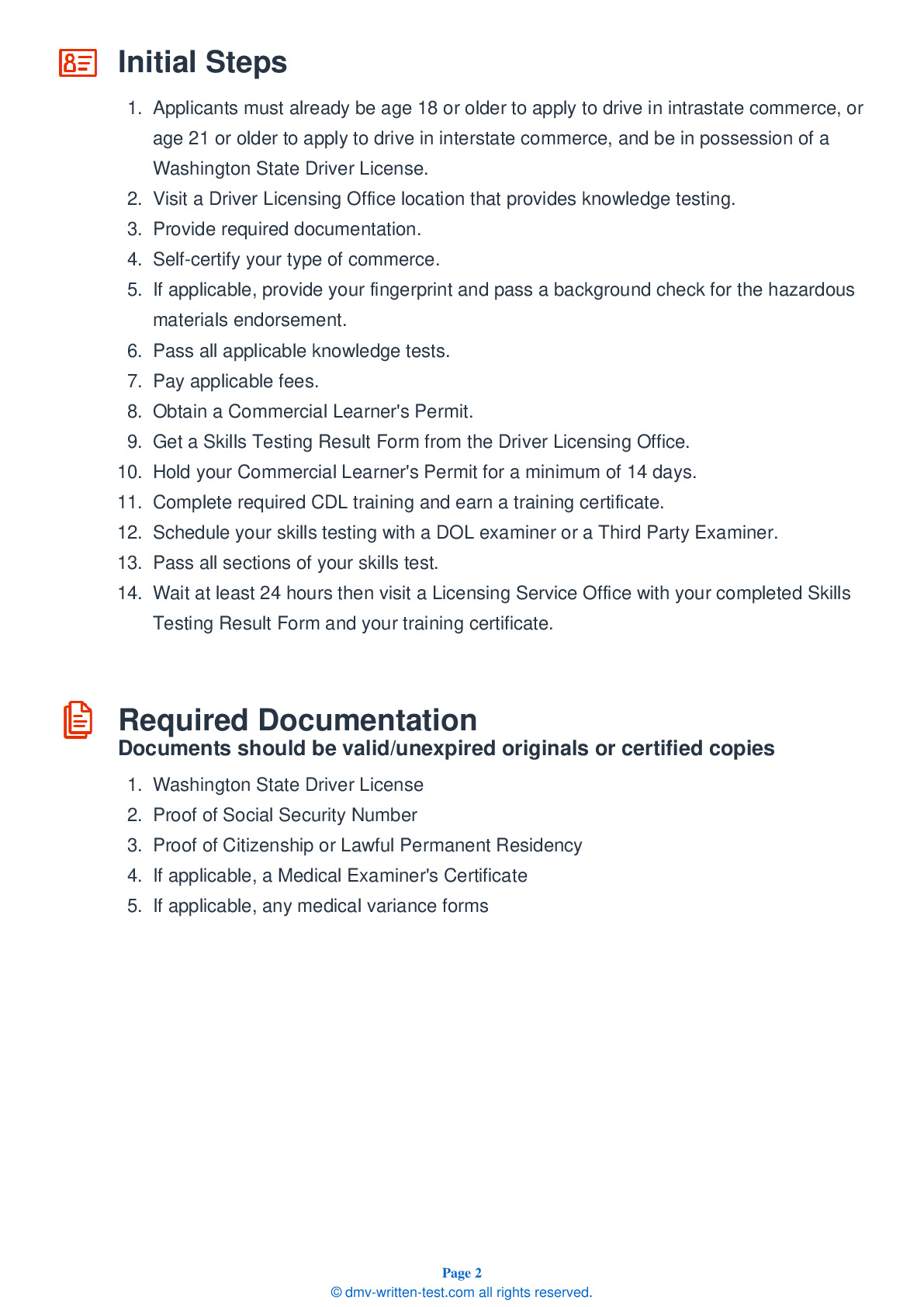Air Brakes
This endorsement is required for driving a vehicle with air brakes. To receive this endorsement, applicants must pass a written test. The test consists of 25 multiple choice questions. Each question has three answer choices. To pass, the applicant must answer at least 20 questions correctly. Test questions come from the Commercial Driver Guide. Questions come from the chapter covering: Air Brakes. The Air Brakes endorsement may be used with the Class A, B or C CDL.
Number of Question
Passing Score
1. When the spring brakes are on, you should never:
Explanation
Never push down the brake pedal while the spring brakes are activated. The combined force of springs and air pressure could damage the brakes.
2. A slack adjuster should move no more than ____ from where it is attached to the push rod.
Explanation
Before a trip, you should check each slack adjuster after parking, setting wheel chocks, and disengaging the parking brake. Pull the slack adjusters to make sure that they do not move more than about one inch from where the push rod is attached. If they move more than one inch, they may be out of adjustment and will need to be fixed.
3. When traveling down a steep downgrade:
Explanation
On long and/or steep downgrades, you should primarily use engine braking to control the speed of your vehicle. Use your brakes only as a supplement to this effect.
4. When parked on a flat surface, you should:
Explanation
When parking on a level surface, you should use wheel chocks. If the vehicle is not equipped with spring brakes, this is essential to prevent the trailer from moving.
5. While driving, ____ generally holds spring brakes in place.
Explanation
While driving, spring brakes are generally held in place by air pressure. If the air pressure gets low enough, the springs will activate the brakes.
6. What kind of force do emergency brakes use?
Explanation




